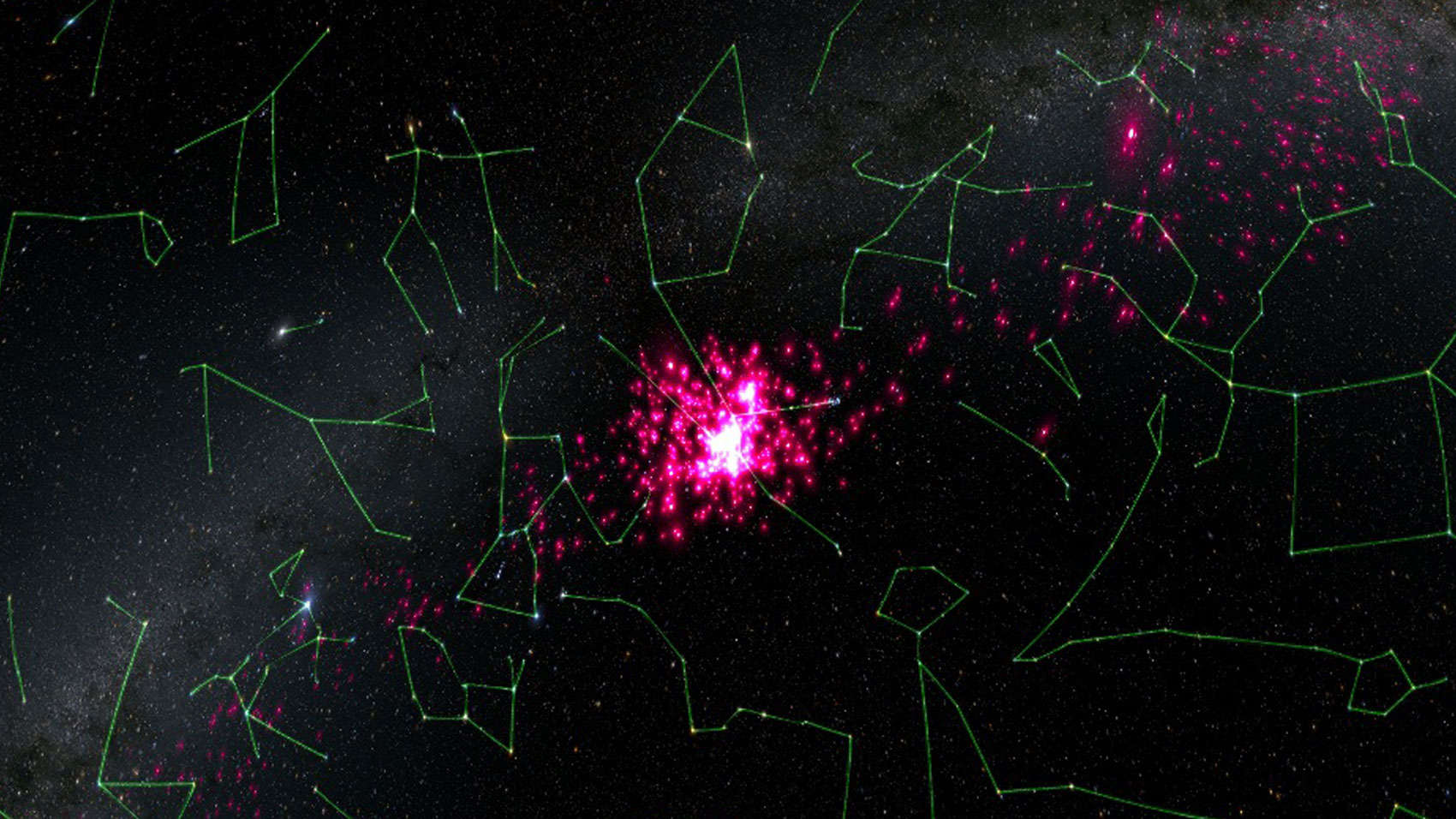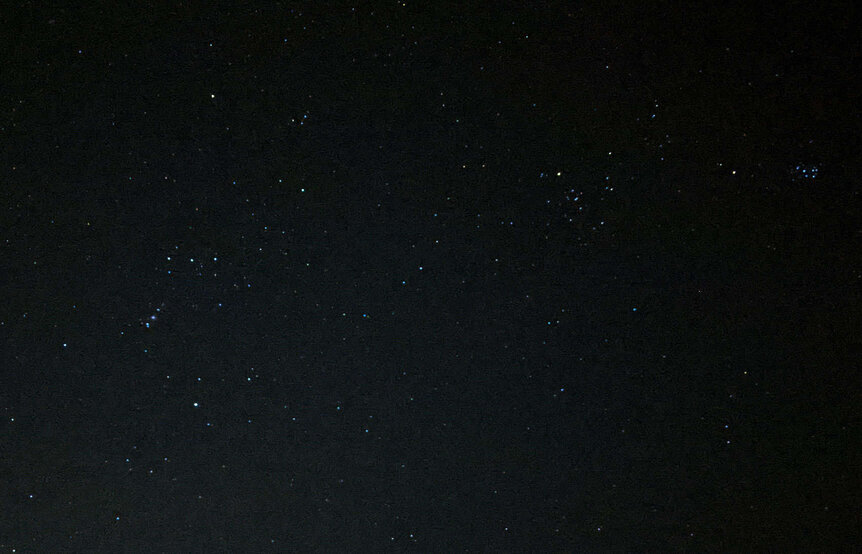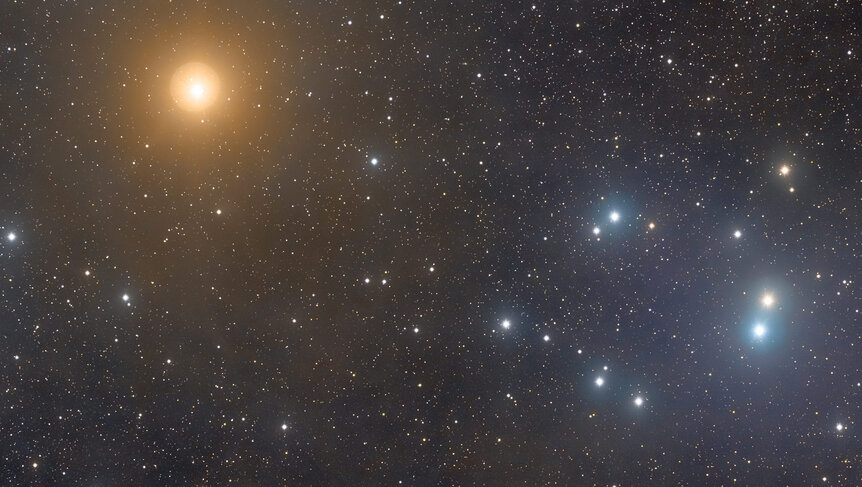Create a free profile to get unlimited access to exclusive videos, sweepstakes, and more!
The galaxy eats its own: The head of Taurus is being shredded by the Milky Way

If you go outside in late winter/early spring and look just to the right of Orion (for northern hemisphere observers), you'll see a V of brightish stars marking the head of Taurus the Bull. The bulk of these stars are actually part of a physical stellar cluster called the Hyades*, and at about 145 light years away it's the closest such cluster to Earth.
For now. The cluster is dissolving over time, the stars inside it slowly drifting away. This has been known for some time, and many stars in the sky near the cluster have been seen to be moving away from it, forming two long streamers called tidal tails.
New theoretical research shows, however, that the tails are much longer than first thought, and also provides the key to finding many more stars that left the Hyades long ago.
Some stars are born isolated or in very small groups, but some giant clouds of gas and dust can birth much larger groups of stars. Called open clusters, they can have hundreds of stars in them, loosely bound by their mutual gravity such that every star orbits the cluster center. In general they're just a few dozen light years across.
Over time, gravitational interactions tend to let the more massive stars sink to the cluster center, while less massive stars move to the outskirts. At large enough distance, the gravity of the galaxy itself can pull these suburban stars out of the cluster, freeing them.
Mind you, the cluster is orbiting the center of our galaxy, too. So if a star gets pulled away from the cluster in such a way that it loses orbital energy, it'll fall toward the galactic center a bit. Stars in lower orbits move faster (just like Mercury, the closest planet to the Sun, orbits it the fastest), so any stars like this pull ahead of the cluster. If the galaxy yanks a star out of the cluster by giving it more energy, it goes into a higher orbit and slows down, trailing the cluster.
Over time, stars leaving the cluster form two long streamers, with one slightly closer to the galactic center moving ahead of the cluster (called the leading arm) and one slightly farther out lagging behind (the trailing arm), creating an overall elongated S-shape.
The Hyades is a middle-aged cluster, 600 – 700 million years old, so there has been plenty of time for this to happen. The problem is finding those stars. The cluster sits in the plane of the Milky Way, where there are thousands, even millions of stars in the foreground and background, making it difficult to find lost cluster stars. However, the Gaia satellite has mapped the locations and speeds of well over a billion stars, and many stars have been found in the Hyades cluster tails using Gaia data and assuming they share the bulk of the cluster's velocity (in other words assuming they drift away slowly).
The new research looked into this. A team of astronomers started with a computer model that maps how stars are born in a cluster, and modified it to include other physical factors like the cluster rotation (if there's an overall rotation it can lose stars more easily due to centrifugal force). What they found is that stars can leave the cluster more rapidly than first thought, and they could predict not just that extra speed but also the direction of those stars.
They looked again at the Gaia observations, starting with 100 million stars and whittling them down to just a few hundred given the new data. They were able to accurately predict the shape of the tidal tails and add many new stars to them, finding some as far from the cluster as 2,600 light years!
They also found that the tails weren't uniform, but instead were clumped. Some of this is expected due to the way the physics works out as stars leave the cluster and orbit the galaxy on their own; they can pile up at certain distances from the cluster, causing lumps in the tails.
However the Hyades tails were even more peculiar than that. The leading tail moving ahead of the cluster is much more prominent than the trailing one, and in fact the trailing one is quite meager, with a decided paucity of stars.
That's odd. What could cause that?
It turns out the galaxy isn't just a smooth distribution of stars. There are clusters, of course, but also massive dust and gas clouds and such, and if the cluster passes one of these the gravity can disrupt the tails somewhat. The models show that to cause this much trouble in the Hyades tails, though, it would have had to pass something very massive, 10 million times the mass of the Sun, not too long ago. But nothing like that is seen near the cluster.
The authors posit that this clump may yet exist, and may be the first clear evidence of a dark matter clump, a clot of this mysterious matter that some models of galaxy formation predict should exist. They would orbit the galaxy too, invisible except for their gravitational effects. It's possible this is what has affected the Hyades tails, though by no means certain. It's also possible the model prediction is off, and the Hyades passed a gas cloud longer ago so that it's farther away now. It's too soon to make solid statements about dark matter clumps, but the finding is pretty intriguing.
The new work is still pretty cool, and looks like it will be useful in better understanding how clusters form, as well as how they change over time. And if it can be used to map out the locations — heck, even the existence — of dark matter clumps, then it will prove extremely useful to astronomers.
We still don't know if the Sun was born solo or if it came to be in a cluster like the Hyades. The more we learn about them (and the galaxy itself) the better we can track down our own origins.
*The brightest star there is the orange giant Aldebaran, which is not part of the cluster but instead an isolated star coincidentally much closer to Earth.





























